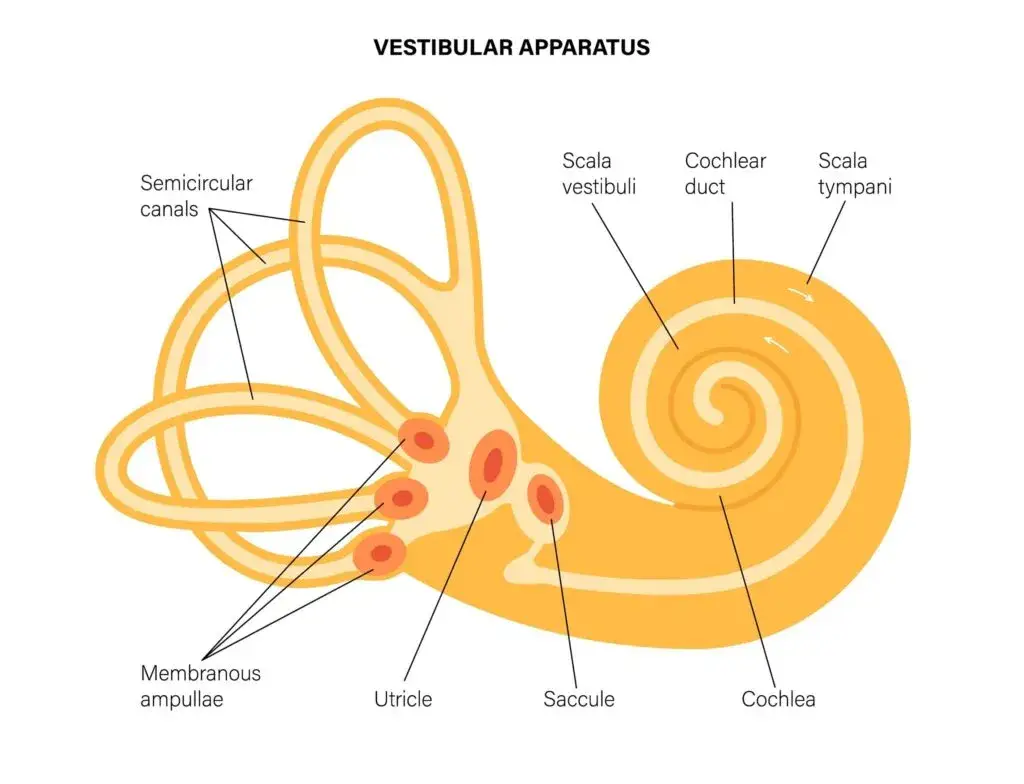
Best Vertigo Doctor Longboat Key: Feeling dizzy, off‑balance, or like the room is spinning can turn everyday life on Longboat Key into a challenge. If you’re searching for the best vertigo doctor in Longboat Key or typing “Vertigo doctor near me” and hoping for real answers—not just temporary relief—you’re in the right place. At Lavender Family Chiropractic in Sarasota, our team focuses on the upper cervical spine (atlas and axis) to correct the root cause of many vestibular problems. Our approach is gentle, precise, and evidence‑informed.
We utilize 3D CBCT imaging and functional nervous system scans (Tytron) to map out your unique anatomy, craft a customized plan, and help restore stability to your balance system without the popping, twisting, or cracking you might associate with traditional chiropractic.
We have 120+ five‑star reviews from people across Longboat Key, Lido Key, Siesta Key, St. Petersburg, Bradenton, Lakewood Ranch, Parrish, Ellenton, Venice, Osprey, Punta Gorda, Myakka City, and beyond who have found relief from vertigo, dizziness, vestibular migraine, PPPD, MdDS, BPPV, and other balance disorders. If you’ve tried vestibular therapy, medications, or “waiting it out” without lasting success, this guide will show you a different path: stability from the top down.
Best Vertigo Doctor Longboat Key: What You’ll Learn in This Guide
- What vertigo and chronic dizziness really are—and how they differ.
- The most common vestibular diagnoses: BPPV, Vestibular Migraine, PPPD, MdDS, and more.
- Why the upper cervical spine (atlas/C1 and axis/C2) is often the missing link.
- How 3D CBCT and Tytron scans help us pinpoint the exact correction you need.
- Why vestibular therapy alone may not fully resolve symptoms when a structural trigger persists.
- Exactly what to expect in our step‑by‑step process at Lavender Family Chiropractic.
- Practical strategies you can start using today during vertigo flares.
- Top 15 FAQs about vertigo, upper cervical care, insurance, safety, and results.
Vertigo vs. Dizziness: What’s the Difference?
People often use “vertigo” and “dizziness” interchangeably, but they’re not the same. Vertigo is the sensation of spinning or movement when you or the environment are actually still. Dizziness is a broader term that can include lightheadedness, feeling faint, unsteadiness, or a sense of being “off.” Understanding which sensation you’re experiencing helps guide testing and care.
Common symptoms you might notice include:
- Spinning, rocking, swaying, or bobbing sensations (especially when turning in bed, rolling to one side, or bending over)
- Nausea, vomiting, or motion sensitivity
- Head pressure, ear fullness, sound sensitivity
- Blurry vision, visual motion sensitivity (grocery aisles, scrolling screens, fast traffic)
- Headaches or vestibular migraine features (aura, light/sound sensitivity)
- Brain fog, fatigue, and anxiety driven by unpredictability of episodes
Where many people get stuck: traditional testing focuses primarily on the inner ear and eye movements. That’s vital—but it’s not the whole story. Your neck, especially the upper cervical spine, provides constant proprioceptive (position) information to the brainstem and cerebellum. When that input is distorted by misalignment or irritation, the brain’s balance map can go haywire—even if inner ear tests look normal.
Common Vertigo & Dizziness Diagnoses (and What They Mean)
BPPV (Benign Paroxysmal Positional Vertigo)
BPPV happens when tiny calcium crystals (otoconia) migrate into the semi‑circular canals of the inner ear. Classic BPPV causes brief, intense spinning with specific head movements—often when rolling over in bed or tipping the head back. Canalith repositioning maneuvers can be helpful. Yet, people often experience recurrent BPPV or lingering dizziness afterward. Structural contributors—like tension and misalignment at C1/C2—may perpetuate abnormal head/neck mechanics and proprioceptive input, priming the system for recurrences.
Vestibular Migraine
This is migraine physiology expressed in the balance system. You may experience vertigo or rocking, with or without head pain. Triggers include stress, sleep changes, certain foods, hormonal shifts, or sensory overload. The trigeminal nucleus and brainstem—regions closely influenced by upper cervical mechanics—play key roles in migraine pathways. Calm, consistent signals from the top of the spine can help reduce frequency and intensity for many.
PPPD (Persistent Postural‑Perceptual Dizziness)
PPPD is a chronic sense of rocking, swaying, or unsteadiness, worsened by upright posture, complex visual environments, and head movements. It often follows an initial vestibular event (BPPV, vestibular neuritis, concussion, migraine), and persists as the brain “learns” maladaptive patterns. Restoring stable, accurate proprioceptive input from the neck—paired with graded exposure and breath training—can help the nervous system relearn balance.
MdDS (Mal de Débarquement Syndrome)
MdDS is the persistent sensation of rocking or bobbing, commonly after travel by boat, plane, or car. Triggers include prolonged passive motion or, in some cases, stress or hormonal changes. Many report temporary relief while riding in a car—only to have the rocking return when still. Addressing upper cervical irritation can reduce central sensitization and vestibulo‑spinal mismatch, creating conditions for relief.
Cervicogenic Dizziness
Dizziness driven primarily by neck dysfunction. Poor joint mechanics, muscle guarding, and misalignment at the upper cervical levels can generate confusing proprioceptive input that feels like dizziness or unsteadiness—especially with head turns, computer work, or after whiplash.
Meniere’s Disease & Ear Pressure Patterns
While Meniere’s involves fluctuating hearing loss, tinnitus, and episodic vertigo, many patients present with ear fullness/pressure and dizziness that look “Meniere’s‑like.” Upper cervical misalignment can influence autonomic tone and venous/lymphatic drainage patterns around the head and ears. Addressing the top of the spine may help reduce triggers contributing to fluid pressure dynamics.
Why the Upper Cervical Spine (Atlas & Axis) Is the Missing Link
Your atlas (C1) and axis (C2) are unique. They cradle the brainstem, house dense proprioceptive receptors, and guide head/eye coordination. If the atlas or axis shifts even slightly out of optimal alignment, your brain can receive distorted signals about where your head is in space. The result: visual‑vestibular conflict, abnormal muscle tone, and autonomic nervous system imbalance—experienced as spinning, rocking, brain fog, headaches, and anxiety.
Key connections:
- Brainstem balance centers: The vestibular nuclei integrate input from your inner ears, eyes, and neck. Upper cervical irritation can bias this integration.
- Cerebellar calibration: The cerebellum constantly “fine tunes” posture and eye movements. Faulty neck signals jam the calibration.
- Trigeminal‑cervical complex: The trigeminal system (often active in migraine) cross‑talks with upper cervical nerves. Misalignment can sensitize this network, amplifying head pressure and light/sound sensitivity.
- Vertebral artery & venous flow: Neck mechanics influence blood flow dynamics; better alignment supports healthier perfusion and drainage patterns under everyday movements.
When you correct the structure at the top, you change the signals that govern balance. That’s why people who have “tried everything”—but never the atlas—often notice a shift when we finally address this crucial area.
Why Vestibular Therapy Alone May Not Solve the Problem
Vestibular therapy is valuable. It can retrain gaze stability, reduce motion sensitivity, and build confidence. We collaborate respectfully with therapists when appropriate. But when a structural driver persists—especially at C1/C2—the brain is constantly fed mismatched signals. Exercises can feel like they “don’t stick,” or progress stalls the moment you stop doing them. It’s like trying to recalibrate a compass while the magnetic field is still distorted.
At Lavender Family Chiropractic, we start by analyzing your upper cervical alignment with 3D CBCT. Then we examine Thermographic (Tytron) scans to assess functional nerve patterning. If we confirm an atlas/axis issue, we gently correct it using a highly specific upper cervical adjustment—no twisting or cracking. Many patients notice improved steadiness and reduced reactivity, which allows vestibular therapy (if still needed) to work better and hold longer. In short: fix the input, and the exercises make more sense to your nervous system.
What Makes Lavender Family Chiropractic Different
- 3D CBCT Imaging: Traditional x‑rays are 2D. Our cone beam CT produces a precise 3D map of your upper cervical joints, showing the exact angle and direction of misalignment. This precision matters—millimeters and degrees count when you’re working next to the brainstem.
- Functional Nervous System Scans (Tytron): These surface thermography scans track autonomic patterns along your spine. We use them pre‑ and post‑adjustment and at key re‑evaluations to confirm your nervous system is moving toward balance.
- Gentle, Precise Adjustments: Our methods are upper cervical‑focused (including HIO Knee‑Chest‑inspired protocols). No popping, twisting, or cracking. Many patients who were nervous about chiropractic care are surprised by how comfortable our approach is.
- Data‑Driven Care Plans: We combine your history, exam, CBCT, and scans to build a plan that fits you—your diagnosis, your goals, and your life on Longboat Key.
- 120+ Five‑Star Reviews: Real people across Sarasota and Manatee County report lasting relief from vertigo, dizziness, migraines, and more. We’re grateful for the trust—and we work hard to earn it with each visit.
- Three‑Doctor Team, One Mission: Dr. Rusty Lavender, Dr. Jacob Temple, and Dr. Will Guzinski bring a compassionate, detail‑oriented approach to every case. When you’re not sure where to turn, our team is here to listen, test, and guide.
Our Step‑by‑Step Process for Vertigo & Dizziness Patients
- Conversation & History
We begin by listening. What does your dizziness feel like? What triggers it? What have you tried? We’ll review prior imaging, therapy notes, ER visits, and medication trials. - Targeted Neurological & Postural Exam
We assess eye movements, balance strategies, head/neck mobility, posture, and autonomic signs. We also evaluate cervical muscle tone, especially the suboccipitals that connect directly to your vestibular processing. - 3D CBCT Imaging of the Upper Cervical Spine
If clinically indicated, we capture a 3D CBCT to visualize joint orientation and misalignment with millimeter accuracy. This allows us to plan a truly custom correction (angle, depth, and vector) tailored to your atlas/axis anatomy. - Tytron Functional Nervous System Scan
We map sympathetic/parasympathetic balance along your spine. An abnormal pattern can confirm that your nervous system is under stress from structural irritation. - Precision Upper Cervical Adjustment
Using the data we’ve gathered, we deliver a gentle, exact correction to your atlas or axis. No twisting. No cracking. The goal is to restore alignment and normalize proprioceptive input into the brainstem. - Post‑Adjustment Re‑Check
We re‑scan, re‑test balance markers, and reassess head/neck motion. Many patients notice immediate changes: steadier gait, calmer vision, lighter head pressure. - Stabilization Phase
We space visits as your alignment begins to hold. We teach you how to protect the correction with sleep positioning, workstation tweaks, and daily movement strategies. - Integration (If Needed)
If your case benefits from vestibular therapy or vision therapy, we guide you on timing—after your atlas/axis is consistently holding, so you get more from the exercises with fewer flare‑ups. - Periodic Re‑Evaluation
We track objective changes and subjective wins. The long‑term goal isn’t endless adjusting—it’s stability with fewer, lighter episodes and more confident movement.
Signs Your Vertigo May Be Coming from the Neck
- Episodes sparked by looking up, down, or to the side
- Dizziness that follows desk work or heavy phone/computer use
- Neck pain, stiffness, or headaches paired with dizziness
- History of whiplash, concussion, sports injuries, or dental procedures requiring prolonged mouth opening and head extension
- Relief when supporting your head/neck or changing pillow positions
If these sound familiar, your upper cervical spine deserves a closer look.
How BPPV, Vestibular Migraine, PPPD & MdDS Relate to the Upper Neck
- BPPV: Even after successful canalith maneuvers, many feel wobbly. Correcting atlas alignment can reduce recurrence risk by normalizing head‑neck mechanics and proprioceptive input that guide vestibular reflexes.
- Vestibular Migraine: Brainstem excitability often improves when aberrant upper cervical input calms down. Patients report fewer attacks, lower sensory sensitivity, and an easier time maintaining routines.
- PPPD: A chronically vigilant system benefits from stable proprioception. When the atlas is aligned, visual and balance re‑training becomes less triggering, accelerating progress.
- MdDS: This condition involves central adaptation to motion; consistent, accurate neck input can help the brain re‑adapt to stillness by restoring a reliable “north star” for postural control.
None of this says “the neck is the only cause.” But when the top of the spine is out of balance, your brain struggles to reconcile mixed messages. Correct the inputs, and the system often settles.
What to Expect After Your First Few Adjustments
- Calmer visual motion sensitivity: Grocery aisles and scrolling screens feel less overwhelming.
- Fewer positional spins: Rolling in bed or tipping back in the shower no longer launches an episode.
- Clearer head: Reduced pressure, less brain fog, steadier mood.
- Improved sleep quality: Your nervous system shifts out of fight‑or‑flight.
- Confidence: You begin to trust your body’s balance again.
Results vary based on duration and complexity of your case, overall health, sleep, stress, and compliance with recommendations. Our aim is consistent, compounding wins—not quick fixes that fade.
Patient Stories (De‑Identified)
- “Boat‑Rocking” After a Cruise (MdDS Pattern): A Longboat Key resident felt constant bobbing after a week at sea. Medications dulled the sensation but it returned every afternoon. CBCT revealed a rotational atlas misalignment; Tytron showed a persistent stress pattern. After a series of gentle corrections and simple home strategies, the bobbing settled and she returned to beach walks without sunglasses and earplugs.
- Recurring “Bed Spins” (BPPV Features): A retiree’s morning routine was derailed by spinning whenever he rolled to the right. Maneuvers helped but episodes came back monthly. CBCT showed a side‑slip at C1; once corrected and stabilized, recurrences dropped off and he resumed golf without anxiety.
- Vestibular Migraine with Visual Triggers: A young professional was missing work due to light sensitivity and motion sickness in busy stores. Aligning her atlas reduced attack frequency and intensity; with stabilization, she tolerated gentle vestibular exercises that previously provoked days of symptoms.
These are illustrative—not promises—but they show what’s possible when we remove structural interference and let the nervous system recalibrate.
Lifestyle Triggers We’ll Help You Tame
- Sleep: Optimize pillow height, side‑sleeping position, and pre‑sleep routine to protect your alignment.
- Hydration & Electrolytes: Even mild dehydration can heighten dizziness; we’ll share simple targets.
- Screens & Visual Environments: Pace exposure and use visual breaks to prevent overload.
- Workstation Ergonomics: Monitor height, chair support, and keyboard placement reduce neck strain.
- Stress Modulation: Breath practices and micro‑breaks help quiet the sympathetic system.
- Movement Snacks: Gentle neck mobility and whole‑body movement keep inputs balanced without over‑challenging sensitive systems.
Why “No Popping, Twisting, or Cracking” Matters for Sensitive Vestibular Systems
Many vertigo patients are understandably wary of neck adjustments. Our upper cervical methods use calculated vectors and light force to correct alignment with precision, not brute force. People routinely describe our adjustments as “barely there”—yet they produce measurable changes on follow‑up scans and balance tests. For irritated vestibular systems, calm and precise beats aggressive every time.
Top 15 FAQs About Vertigo, Dizziness & Upper Cervical Care
- Are you the “best vertigo doctor” for Longboat Key?
We focus on uncovering and correcting upper cervical drivers behind vertigo and dizziness. Our 120+ 5‑star reviews reflect strong outcomes for many. “Best” is personal—but if you value precise testing, gentle care, and root‑cause thinking, we’d love to help. - How do you know if my atlas is misaligned?
We combine a detailed history with exam findings, Tytron functional scans, and 3D CBCT imaging. CBCT lets us see the exact joint angles so we can plan a custom correction. - What if I’ve already tried vestibular therapy?
Great—your brain has practice adapting. If you still struggle, it may be because a structural input is off. Correct the atlas, and vestibular therapy (if needed) often works better and holds longer. - Is the adjustment safe?
Upper cervical adjustments are gentle and precise. We do not twist or crack the neck. We take meticulous steps to ensure you’re an appropriate candidate. - Will I need adjustments forever?
No. The goal is stability, not dependence. Early on, visits may be more frequent. As you hold alignment, we space visits out. - How long until I feel better?
Some notice changes immediately; others improve steadily over weeks. Chronic cases can take longer. We’ll set realistic milestones and celebrate progress along the way. - Can upper cervical care help BPPV?
We don’t “treat BPPV” directly; we correct upper cervical misalignment that may contribute to recurrence or lingering dizziness. Many patients find fewer positional episodes once alignment holds. - What about Vestibular Migraine, PPPD, and MdDS?
We focus on stabilizing inputs to the brainstem and cerebellum. Many with these diagnoses report less rocking, fewer attacks, and greater resilience as alignment improves. - Do you work with other providers?
Yes. When helpful, we coordinate with vestibular therapists, ENTs, neurologists, and primary care to support comprehensive care. - What if I also have neck pain or headaches?
That’s common. The same misalignment that disrupts balance can irritate pain pathways. Many notice improvements in both dizziness and discomfort. - I’m sensitive and anxious—can you go slow?
Absolutely. We tailor the pace to your nervous system. Our adjustments are calm and light, and our office vibe is designed for sensitive patients. - Will CBCT expose me to a lot of radiation?
CBCT is a focused scan of the upper neck. We use imaging only when clinically necessary and explain benefits and risks so you can decide comfortably. - Do you accept insurance?
Our office is out of network with insurance. Many patients receive a superbill to submit to their insurer for potential reimbursement based on their coverage. We offer multiple payment and financing options. - How do I know if upper cervical is right for me?
If you have vertigo/dizziness with neck tension, a history of head/neck injury, or symptoms triggered by head position, upper cervical evaluation is a smart next step. - How soon can I schedule, and what should I bring?
Call (941) 243‑3729 or visit www.chiropractorsarasotaflorida.com. Bring prior imaging, therapy notes, and a list of triggers. We’ll take it from there.
Your First Visit: What It’s Like
Expect a relaxed, attentive experience. We’ll talk through your story and goals, run a focused exam, and determine whether CBCT is appropriate that day or later. If imaging confirms an upper cervical issue—and you’re a candidate—you may receive your first gentle correction. We keep you informed at each step. Many patients describe their first visit as the moment hope returned.
Why Longboat Key Residents Choose Us
- Close & Convenient: Our Sarasota office is an easy drive from Longboat Key, 5899 Whitfield Ave, Ste 107, Sarasota, FL 34243.
- Coastal‑Lifestyle Aware: We understand boat days, beach walks, and travel are part of life here. We build plans that support the activities you love.
- Flexible Scheduling: We respect that dizziness is unpredictable. We do our best to accommodate flares and urgent needs.
- Clear Communication: You’ll know what we’re doing, why we’re doing it, and how we’ll measure progress.
Self‑Care During a Vertigo Flare (Safe, Gentle Ideas)
- Settle your visual field: Focus on a single point until the spinning eases.
- Head support: Use a rolled towel at the base of your skull when resting.
- Hydrate: Small, frequent sips. Consider gentle electrolytes if appropriate.
- Calm breathing: Slow exhale emphasis can shift your nervous system.
- Light nourishment: Steady blood sugar supports steadier balance.
- Avoid rapid head turns: Move like you’re underwater until the flare passes.
These tips don’t fix a structural problem, but they can help you ride out a storm more comfortably while we work on the cause.
After Alignment: Smart, Simple Progressions
Once your atlas is holding, we may suggest gradual exposure to visually busy environments and simple balance drills that respect your nervous system’s new set‑point. Less is more at first. The aim is integration, not exhaustion.
Upper Cervical Chiropractic—What It Is (and Isn’t)
What it is:** A specialized, data‑driven approach centered on the atlas/axis. It relies on precise measurements (like CBCT) and gentle, specific corrections to restore alignment and normalize nerve input.
What it isn’t: Forceful, generalized manipulation. We don’t chase every vertebra or rack up endless visits. We aim for accuracy, then stability.
Why it’s relevant for vertigo: Because the top of your neck is the front door to your balance system. When that door hangs crooked on its hinges, the whole house feels off. Straighten the hinges, and everything works better.
**Meet Your Doctors
- Dr. Rusty Lavender: Passionate about helping people with vertigo and migraines after his own long journey with daily headaches as a kid—until an upper cervical adjustment changed his life. He understands your urgency to feel normal again.
- Dr. Jacob Temple: Detail‑focused clinician with a calm, steady presence. Patients appreciate his thorough explanations and clear plans.
- Dr. Will Guzinski: Dedicated to precision and patient education. Known for gentle hands and an encouraging approach.
Together, we’ve earned 120+ 5‑star reviews by focusing on people first—and by letting data guide our decisions.
Community Reputation & Results
We’re honored to be considered among the best vertigo doctors for Longboat Key and Sarasota by those we serve. People share that they finally feel heard, that someone looked at the whole picture, and that the plan made sense. Relief often follows clarity.
Insurance, Pricing & Practicalities
Our office is out of network with insurance. Many of our patients receive a superbill to submit to their insurance for reimbursement based on their specific coverage. We offer different payment options and financing, and we’ll review costs before any care begins. No surprises, just straight talk.
Where We Serve
We routinely see patients from Sarasota, Bradenton, Lakewood Ranch, Longboat Key, Siesta Key, Lido Key, St. Petersburg, Parrish, Ellenton, Venice, Osprey, Punta Gorda, and Myakka City. If you’re searching “upper cervical chiropractor near me,” “chiropractor Sarasota Florida,” “chiropractor near me,” “Vertigo doctor near me,” or “Migraine doctor near me,” we’re here to help.
How to Get Started
Lavender Family Chiropractic in Sarasota Florida offers complimentary consultations to learn more about you. Click the link below!
https://intake.chirohd.com/new-patient-scheduling/724/lavender-family-chiropractic
Visit our Website!
To learn more about us go to http://www.chiropractorsarasotaflorida.com
We also service Bradenton, Parrish, Ellenton, Ruskin, Venice, Tampa, St. Pete, Osprey, Longboat, Lakewood Ranch, Myakka City.
If you are in Tampa, Fort Myers, or Salt Lake City, you can visit my other locations! NeckWise Upper Cervical. Visit, www.neckwise.com
If you are not local, visit www.uccnearme.com to find a doctor in your area.
Serving Sarasota, Bradenton, Lakewood Ranch, Parrish, Ellenton, Venice, Osprey, Punta Gorda, St. Petersburg, Siesta Key, Longboat Key, Lido Key, Myakka City and beyond.
- Call (941) 243‑3729 or visit www.chiropractorsarasotaflorida.com to request your first appointment.
- Bring prior results, and jot down your top triggers and goals.
- Expect a calm, thorough process—and a plan tailored to you
Office Address: 5899 Whitfield Ave, Ste 107, Sarasota, FL 34243
Instagram: @lavenderfamilysrq
TikTok: @drrustylavender
Why This Matters—A Final Word of Encouragement
Vertigo can feel isolating. It can make you cancel plans, avoid the bridge, or step off the boat early. But there is a path forward that doesn’t rely solely on symptom‑management. By correcting the upper cervical spine with modern imaging and gentle, precise care, we help your brain receive accurate signals again—so you can trust your balance and get your life back on Longboat Key.
If you’re ready for answers—and a plan that treats you like the individual you are—Lavender Family Chiropractic is ready to listen, test, and guide. Your next step is simple: call (941) 243‑3729 or visit www.chiropractorsarasotaflorida.com. Hope lives here.
SEO Note & Keywords (Integrated Naturally Throughout the Article)
Best Vertigo Doctor Longboat Key, chiropractor Sarasota Florida, chiropractor near me, upper cervical chiropractor near me, upper cervical chiropractic, Vertigo doctor near me, Migraine doctor near me, BPPV, Vestibular Migraine, PPPD, MdDS, dizziness, vestibular therapy, atlas misalignment, CBCT, Tytron, Lavender Family Chiropractic, Sarasota, Bradenton, Lakewood Ranch, Longboat Key, Siesta Key, Lido Key, St. Petersburg, Parrish, Ellenton, Venice, Osprey, Punta Gorda, Myakka City.
Disclaimer
Information in this article is educational and not a substitute for personalized medical advice or diagnosis. Results vary. If you have red‑flag symptoms (sudden severe headache, double vision, fainting, stroke‑like symptoms), seek urgent medical care immediately. We collaborate with your healthcare team to support the best outcome for you.





